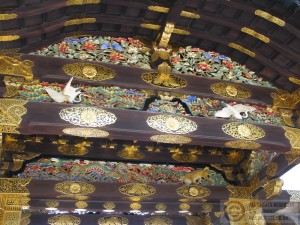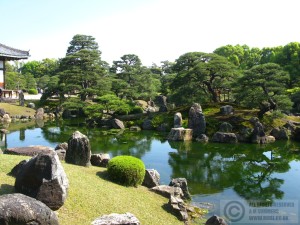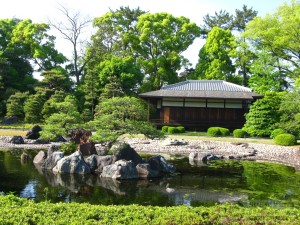As Nishihonganji temple was literally around the corner from our apartment we thought we should at least take a peek, even though it’s not one of Kyoto’s top sights. It wasn’t especially interesting but there was some nice carving on one of the outbuildings. As we approached a guy signalled frantically to us to be quiet – nothing to do with any religious ritual in progress: they were filming on the other side of the wall and didn’t want our conversation on their soundtrack.
It was a quick bus ride north to Nijo Castle. The building was OK: most of the rooms were bare, and many had very similar paintings of trees on the walls. None contained furniture, but models of people had been placed in some to illustrate their use. Although I don’t know how anybody could say with certainty that rectangular bare room A was an audience room and identical rectangular bare room B was a weapons store. The extensive gardens were more appealing, with lakes and moats and the remains of massive stone ramparts.
- Nijo Castle gardens
We took a bus down to the riverside, pausing to pick up some supermarket sushi rolls for a very late lunch. The river bank was lined with people sitting enjoying the late afternoon sun and along Pontocho, the narrow lane one block back, the bars and restaurants were welcoming their first evening customers. I felt sad that this was our last day in Kyoto: I’d liked Tokyo, but Kyoto was much smaller and cosier, and stuffed with such beautiful places. I think you could spend months there and still find new things to admire every day.






